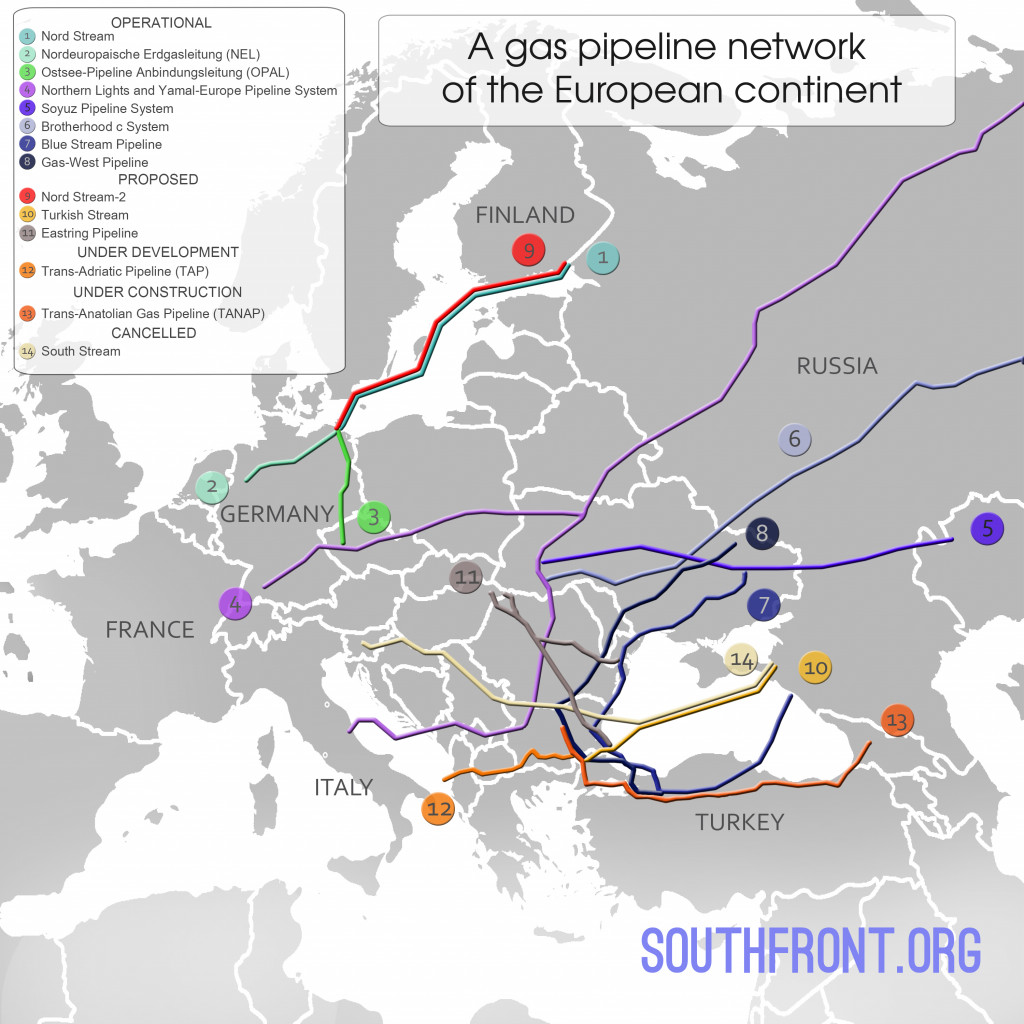Nord Stream 2 isn’t the only gas pipeline changing the situation in Europe. Most of gas pipelines have a strategic influence in the continent. Learn more about a network of power: Gas Pipelines of the European Continent

The article below is originally appeared at New Europe Online
The Nord Stream II gas pipeline intends to bring Russian gas to Germany, the UK, the Netherlands, France, Denmark and others.
The Nord Stream Pitch
Through this deal Russia seeks to consolidate market share in its most lucrative market, which is anything but saturated.
First, because natural gas gains market share against other fuels, especially since Germany’s commitment to go off nuclear energy; one should also recall that at current pricing, environmentally friendly gas can replace even coal.
Secondly, because with prices under $50 a barrel – gas trailing the oil prices – non-conventional gas is being pushed out of the market, the question of market share becomes more crucial.
The “pitch” of the project is that it is going to add more supply from North Siberia. In this vision, Nord Stream II eyes the 50% anticipated surge in demand for Europe’s industry, homes, and vehicles. That is approximately 200 bn cubic meter a year, of which Gazprom wants to meet 25%, adding 55 bn cubic meters a year into the supply.
This sounds very realistic, especially as Nord Stream anchors Germany a a chief lobbyist for the project. After all, the consortium to build operate the initial venture is led by Wintershall Holding (BASF subsidiary) and E. ON Ruhrgas, while Gasunie, GDF Suez, Engine, OMV, and Royal Dutch Shell are also included in the deal.
The East West Cleavage
But, not everyone is happy. Ukraine and Slovakia are anything but happy, with the Prime Minister of Slovakia and his Ukrainian peer giving a joint press conference in September, in which the Nord Stream II agreement was called by Arseniy Yatsenyuk “anti-Ukrainian and anti-European” and Roberto Ficco regretting that “they’re simply making fools of us.” In circumventing the traditional Soviet route, both Ukraine and Slovakia stand to lose € 2,6 bn a year in transit fees (1,8 bn/Ukraine; 800 million for Slovakia).
Poland objected to the construction of Nord Stream I, calling the project a “Ribbentrop-Molotov Pact.” President Andrzej Duda reiterated that the project neglected Polish interests and – in all likelihood – his party is going to have full control of the Polish executive come Sunday. Germany is not making friends in Central Eastern Europe and the Baltics.
The Question of Finance and Sanctions
This is a € 9.9 bn investment that should bring gas into the market by 2019. How can European companies work with Russian companies in the midst of sanctions, in full knowledge that energy accounts for approximately half of Russia’s public revenue is anyone’s guess.
Obviously, a lot of external financing is going to be necessary. In the current political climate and energy prices, Gazprom cannot take on the cost on its own. But, who will lend Gazprom and at what price. But, sanctions apply on financing as well. Who can, if they will, put up the cash for this project?
A Question of Regulation
Then there is “the Gazprom clause,” with which SOCAR is complying when it comes to Trans Anatolian Pipeline Project (TANAP). There will obviously be a problem if the Commission failed to be as tough on Gazprom. And the third-party unbundling regulation means that a third party should have access to the infrastructure and that Gazprom cannot own more than 50% of the project.
How far is Germany willing to lobby for an Article 36 exemption and how will it argue that it adds to supply or competition. For the moment, it merely diverts Ukraine, and in fact consolidates market share. Can the European Commission afford to be convinced? And if that were the case, how is the Commission going to argue the necessity of gas interconnectors in Europe, who may now be seen as merely an alternative distributing network for Russian gas on European tax payers money, rather than Europe’s energy security hedge.





